18 April 2018
Visiting St. Francis’s lovely limestone
Posted by Callan Bentley
Walter Alvarez wrote a great book about the geology of central Italy, but he chose to title it The Mountains of St. Francis, a moniker that didn’t exactly lure me in. Being a bit of a religious outsider, I knew that St. Francis of Assisi (1182 – 1226) was famous for being kind to animals and eschewing luxury in favor of simplicity. But that’s about it. I read Alvarez’s book in spite of its title, and found it a marvelous mix of geological insight and memoir. I recommend it to anyone traveling to that region of the world.
So when I was in central Italy last summer, I made a point to travel to Assisi, the town where the eponymous St. Francis once dwelled. There is a big basilica there, constructed of local limestone, and made marvelous in tribute to St. Francis. Alvarez opens his book here, talking about the delicate pink tone of this limestone, the Scaglia Rossa.
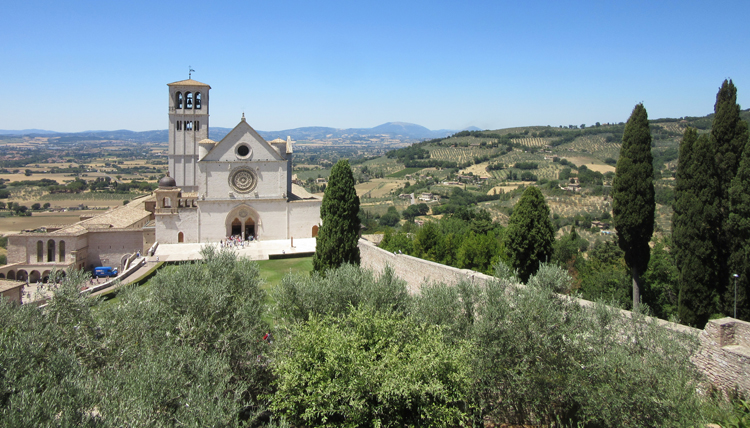

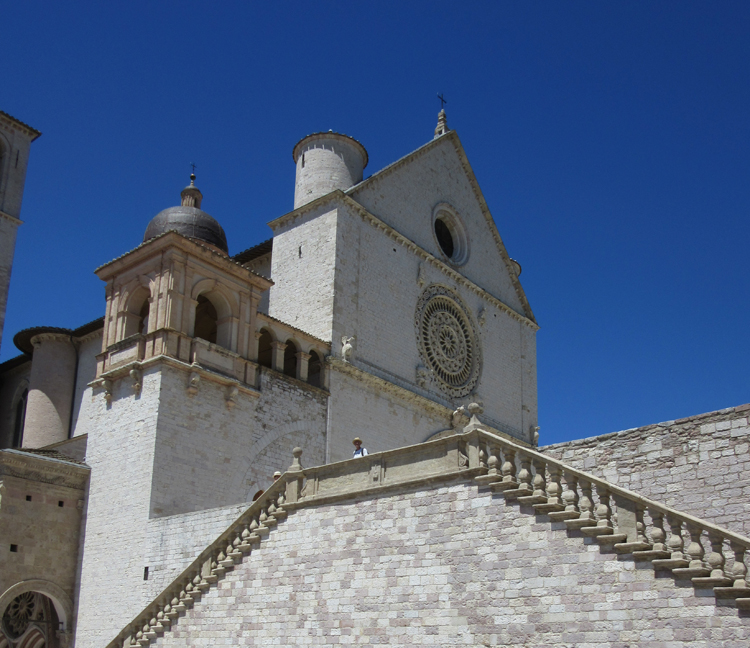
Here’s a closer look at this lovely rock, in a wall on the other side of Assisi:

Here are some charismatic stylolites that cut across bedding and calcite veins:
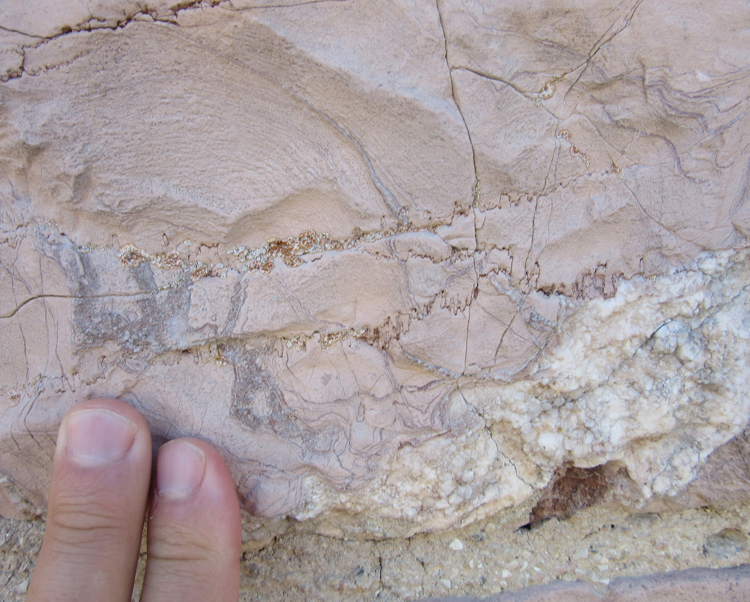
The Scaglia Rossa was seriously deformed during the orogenic events that built the Apennines. Based on their cross-cutting, non-parallel relationship with bedding, I’d venture that these stylolites probably formed at the same time the Scaglia Rossa was folded and thrust-faulted and tilted and smeared out in the Eocene.
A nearby poster shows an ammonite of a shade of pink that seems to match this limestone:
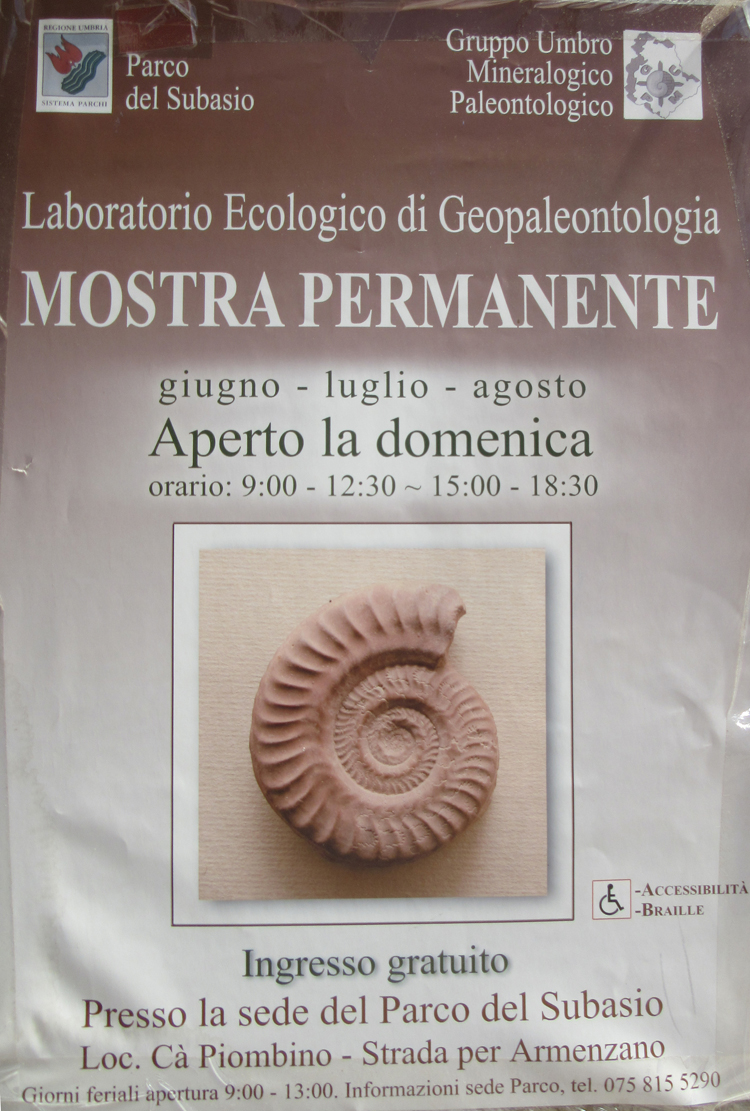
Ammonites died out at the end of the Cretaceous, and of course the Scaglia Rossa spans the end-Cretaceous extinction event. That catastrophe was preserved in this very rock unit, exposed in Bottaccione Gorge near Gubbio. I regret not being able to visit the paleontology exhibit advertised in this flyer; the only fossils I saw in the Scaglia were sand-grain-sized forams.
But I did walk through St. Francis’s basilica, and found it to be remarkably lovely. Check out this scene, rendered in limestones of various hues, all of them exuding a soft, enticing glow.
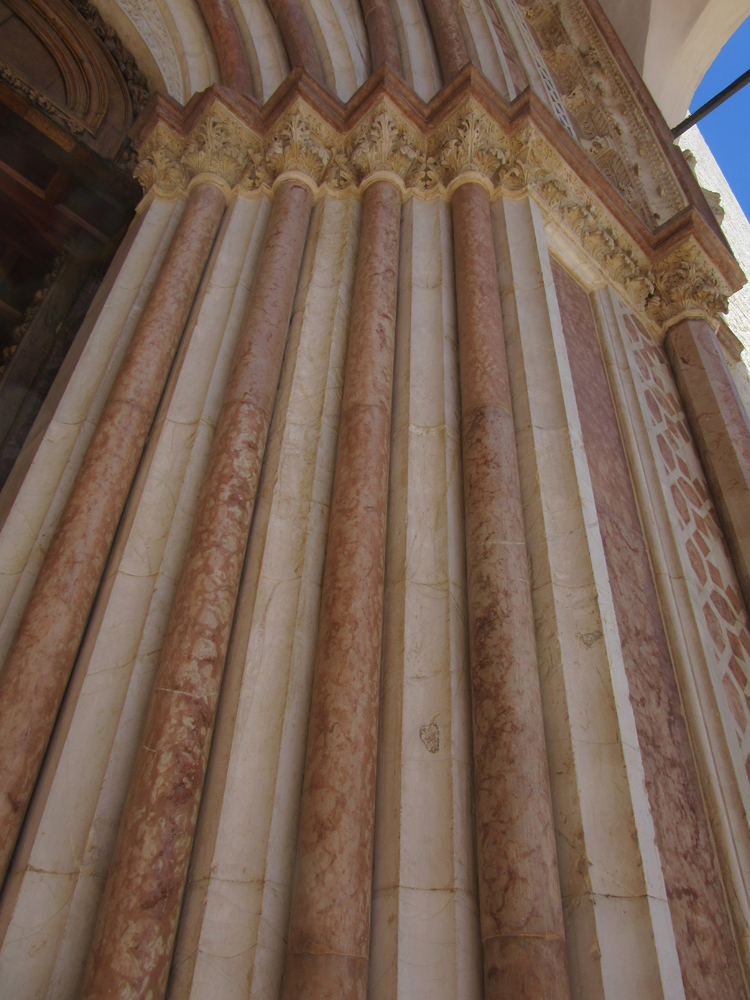
Alvarez makes the point in his book that “San Francesco” probably wouldn’t have approved of this grand basilica erected in his (posthumous) honor. But I found it a delight for the eye, and enjoyed a moment of silence in the lower level, contemplating St. Francis’s tomb and the legacy of a human being on future generations. The limestone of the Scaglia Rossa too shares this property of forming in one time, and acting in subsequent times: forming ridges in the Apennines, forming walls in a church, inspiring people with raw natural beauty, profound scientific insight, and the special beauty that comes from combining natural hues with anthropogenic forms.


 Callan Bentley is Associate Professor of Geology at Piedmont Virginia Community College in Charlottesville, Virginia. He is a Fellow of the Geological Society of America. For his work on this blog, the National Association of Geoscience Teachers recognized him with the James Shea Award. He has also won the Outstanding Faculty Award from the State Council on Higher Education in Virginia, and the Biggs Award for Excellence in Geoscience Teaching from the Geoscience Education Division of the Geological Society of America. In previous years, Callan served as a contributing editor at EARTH magazine, President of the Geological Society of Washington and President the Geo2YC division of NAGT.
Callan Bentley is Associate Professor of Geology at Piedmont Virginia Community College in Charlottesville, Virginia. He is a Fellow of the Geological Society of America. For his work on this blog, the National Association of Geoscience Teachers recognized him with the James Shea Award. He has also won the Outstanding Faculty Award from the State Council on Higher Education in Virginia, and the Biggs Award for Excellence in Geoscience Teaching from the Geoscience Education Division of the Geological Society of America. In previous years, Callan served as a contributing editor at EARTH magazine, President of the Geological Society of Washington and President the Geo2YC division of NAGT.
Another geologic connection is that the basilica was heavily damaged by an earthquake in 1997 and several people were killed in the Basilica itself.